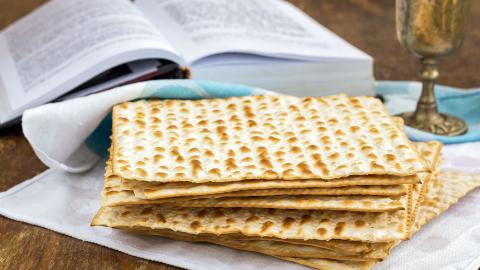
Passover: The Feast of Unleavened Bread
For thousands of years, Jews have celebrated Passover and the Feast of Unleavened Bread, according to the Torah (the first five books of Moses).
So this day shall be to you a memorial; and you shall keep it as a feast to the LORD throughout your generations. You shall keep it as a feast by an everlasting ordinance. Seven days you shall eat unleavened bread. On the first day you shall remove leaven from your houses. For whoever eats leavened bread from the first day until the seventh day, that person shall be cut off from Israel. (Exodus 12:14–15)
For the past couple of weeks, the traditional spring cleaning, which takes place before the holiday, has been the order of the day in Jewish homes throughout Israel.
Every vestige of leaven (yeast) will be replaced by food products labeled “Kosher for Pesach,” indicating that the rabbinate has inspected its ingredients to ensure it is leaven free.
Then, on the 15th of Nisan on the Hebrew calendar (varying annual March-April dates on the Gregorian calendar), families and friends will gather around a festive holiday table to retell the story of our ancestors’ exodus from Egyptian slavery.
The evening meal is called the Passover Seder. Seder, in Hebrew, simply means “order,” indicating that there is an order to the way in which the meal is eaten.
At each place setting is a Passover Haggadah, a beautifully illustrated book detailing the order to be followed, which includes Scripture, traditional songs, poetry, and more.
At the center of the table is a Passover plate, with the six elements that help tell the story of the exodus from Egyptian slavery.
Parsley (karpas), representing the humble beginnings of the nation of Israel, is dipped in salt water, symbolizing the tears shed by our forefathers.
- Horseradish (maror) represents the bitterness of slavery.
- Charoset – A mixture of apples, red wine, nuts and cinnamon, represents the mortar the Israelites used to build Pharaoh’s storehouses.
- Shankbone (z’roah) symbolizes the sacrificed lamb whose blood on the lintels of the Israelites’ homes caused the Angel of Death to pass over their dwellings.
- Roasted egg (beitzah) represents the sacrifice made when the First and Second Jewish Temples stood.
Also on the table is a beautiful white matzo (unleavened bread) cover with three pockets. At the beginning of the meal, the leader of the Seder will break the middle matzo, place it in a white napkin and hide it somewhere in the house.
This piece of matzo is called the afikoman (desert). At the end of the meal, the children will search for the afikoman and whoever finds it will get a reward. Giving the kids something to look forward to helps them make it through the long Seder service.
Another traditional element on the Passover table is the full glass of wine for Elijah, the prophet, who will herald the coming of the Messiah. At a certain point in the service, the leader instructs one of the children to open the door to allow Elijah to enter.
At our family Seder, one of the men managed to drink the wine from Elijah’s cup while we searched for the afikoman. When we returned to the table, we were left to ponder whether Elijah really came and drank some of his wine. For years, I thought he’d been there!
Looking back over the years, I realize that growing up in an observant home, albeit not according to Orthodox tradition, laid the groundwork for an insatiable hunger, which I have till this day, to know the God of Israel.
My mother often reminded us that she walked through life holding God’s hand. There was nothing, she said, we couldn’t ask Him about. So I grew up talking with Him.
When our babysitter’s younger brother was killed in a car accident, I remember sitting on the grassy hill in our backyard, angry tears streaming down my face as I asked, “Where were You?” I never got an answer, but the freedom to ask without fear of condemnation comforted me. Somehow I knew that God allowed it and one day I’d understand why.
One night, many years later, I got down on my knees beside my bed and prayed, “Lord, if you’re who everyone says you are, I want to know you.”
The next morning, the presence of the Living God, the Messiah of Israel, was thick as honey all about me and inside me as well. I experienced a love I’d never known before—the love of the Lamb of God.
Every aspect of the Passover Seder took on new meaning for me from that time forward. How good is our God, who revealed Himself to me, just for the asking.
On this holiday, retelling the miraculous deliverance from Egyptian slavery reminds us of God’s eternal covenant with Israel, a fact that’s carried my people through centuries of persecution.
One day soon, all Israel will know the Truth. I know that because God said so, and He is faithful.



